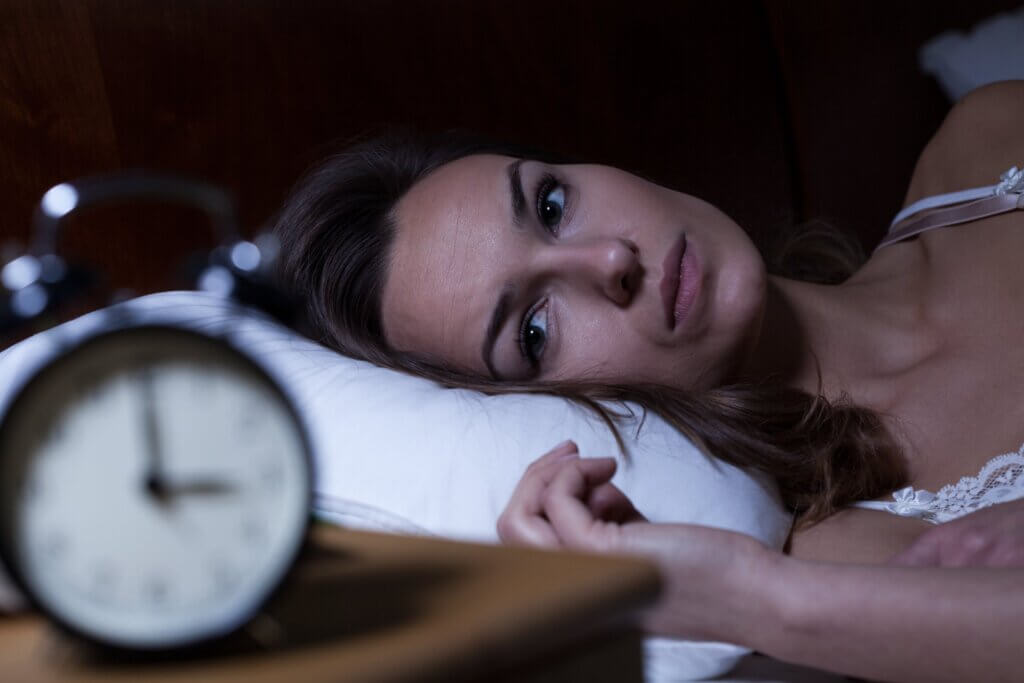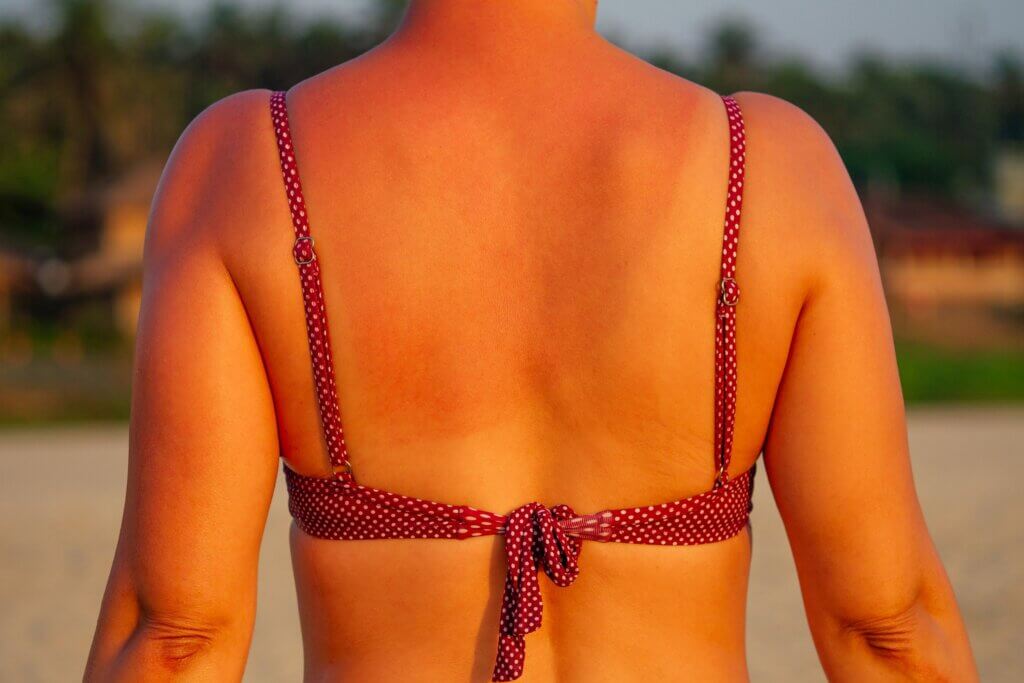The Relationship Between Tanning and Cortisol

Over the last few decades tanning has gained increasing popularity in the general population. Direct exposure to UV rays not only causes increased pigmentation on the skin’s surface, but also has multiple implications in other parts of the body. Today we’ll talk to you about the relationship between tanning and cortisol and how it can affect you.
Tanning and cortisol levels: initial considerations
Cortisol is a steroid hormone that is secreted by the adrenal gland. Both its production and secretion are regulated by what is known as the hypothalamic-pituitary-adrenal (HPA) axis. Although it’s often cited as the stress hormone, the truth is that it fulfills different metabolic, muscular, immune, and brain functions.
Like other hormones, cortisol is governed by a circadian rhythm, as experts advise. In healthy people, hormone levels decline throughout the day, reaching their lowest level around the person’s normal bedtime. Then, they increase during the night, reaching their highest level around the usual waking time.
This circadian rhythm typical of cortisol is independent of continuous waking or sleeping experiences during the day, although it can be altered by various factors. For example, stress, anxiety, physical activity, disturbances in the immune system, blood glucose levels, and exposure to light alter your actual levels.
What is the relationship between tanning and cortisol?

It has been known for decades that light exposure affects the internal biological clock in ways that acutely affect the physiology and behavior of humans, animals, and plants. An article published in the Journal of Biological Rhythms in 2010 found that in both rising and falling phases of cortisol levels, exposure to bright light lowers cortisol levels in humans.
Despite this, and as the researchers point out in the cited study, the concentrations can increase dependence on the duration, intensity, and the exact moment in which people are exposed to light. As we have already mentioned, the factors that come into play in its regulation (anxiety levels, stress and others) can also affect the levels after exposure.
Both natural tanning and sunbed tanning can induce a change in hormone levels. A recurrent tan can induce more pronounced changes, and even a slight imbalance in the circadian rhythm of cortisol. Although the increase is usually slight, in company the variables reviewed can cause the following:
- Changes in sleep patterns
- Imbalances in the immune system (which can make you susceptible to colds)
- Mood changes
- Acne
- Fatigue
- Trouble concentrating
- Weight gain
- Headaches
These sequelae appear when cortisol levels are very high. The occasional tan shouldn’t cause these complications, but dependence on it can. In general, exposure to sunlight and artificial light, especially under an intense spectrum, can induce an increase in the hormone.
Be careful with sun exposure

Getting tanned skin is the goal of millions of people today. Prolonged UV exposure is associated with dozens of complications, one of the best known being the risk of skin cancer. Despite these risks, tanning hasn’t receded one iota in popularity.
It’s very important for people to be aware of all the problems associated with excessive tanning. There is even talk today of tanorexia, referring to the addiction to tanning the skin. Reducing exposure to UV rays is essential, as is the use of sunscreen when interacting outside.
Over the last few decades tanning has gained increasing popularity in the general population. Direct exposure to UV rays not only causes increased pigmentation on the skin’s surface, but also has multiple implications in other parts of the body. Today we’ll talk to you about the relationship between tanning and cortisol and how it can affect you.
Tanning and cortisol levels: initial considerations
Cortisol is a steroid hormone that is secreted by the adrenal gland. Both its production and secretion are regulated by what is known as the hypothalamic-pituitary-adrenal (HPA) axis. Although it’s often cited as the stress hormone, the truth is that it fulfills different metabolic, muscular, immune, and brain functions.
Like other hormones, cortisol is governed by a circadian rhythm, as experts advise. In healthy people, hormone levels decline throughout the day, reaching their lowest level around the person’s normal bedtime. Then, they increase during the night, reaching their highest level around the usual waking time.
This circadian rhythm typical of cortisol is independent of continuous waking or sleeping experiences during the day, although it can be altered by various factors. For example, stress, anxiety, physical activity, disturbances in the immune system, blood glucose levels, and exposure to light alter your actual levels.
What is the relationship between tanning and cortisol?

It has been known for decades that light exposure affects the internal biological clock in ways that acutely affect the physiology and behavior of humans, animals, and plants. An article published in the Journal of Biological Rhythms in 2010 found that in both rising and falling phases of cortisol levels, exposure to bright light lowers cortisol levels in humans.
Despite this, and as the researchers point out in the cited study, the concentrations can increase dependence on the duration, intensity, and the exact moment in which people are exposed to light. As we have already mentioned, the factors that come into play in its regulation (anxiety levels, stress and others) can also affect the levels after exposure.
Both natural tanning and sunbed tanning can induce a change in hormone levels. A recurrent tan can induce more pronounced changes, and even a slight imbalance in the circadian rhythm of cortisol. Although the increase is usually slight, in company the variables reviewed can cause the following:
- Changes in sleep patterns
- Imbalances in the immune system (which can make you susceptible to colds)
- Mood changes
- Acne
- Fatigue
- Trouble concentrating
- Weight gain
- Headaches
These sequelae appear when cortisol levels are very high. The occasional tan shouldn’t cause these complications, but dependence on it can. In general, exposure to sunlight and artificial light, especially under an intense spectrum, can induce an increase in the hormone.
Be careful with sun exposure

Getting tanned skin is the goal of millions of people today. Prolonged UV exposure is associated with dozens of complications, one of the best known being the risk of skin cancer. Despite these risks, tanning hasn’t receded one iota in popularity.
It’s very important for people to be aware of all the problems associated with excessive tanning. There is even talk today of tanorexia, referring to the addiction to tanning the skin. Reducing exposure to UV rays is essential, as is the use of sunscreen when interacting outside.
- Chan S, Debono M. Replication of cortisol circadian rhythm: new advances in hydrocortisone replacement therapy. Ther Adv Endocrinol Metab. 2010 Jun;1(3):129-38.
- Duffy JF, Wright KP Jr. Entrainment of the human circadian system by light. J Biol Rhythms. 2005 Aug;20(4):326-38.
- Jung CM, Khalsa SB, Scheer FA, Cajochen C, Lockley SW, Czeisler CA, Wright KP Jr. Acute effects of bright light exposure on cortisol levels. J Biol Rhythms. 2010 Jun;25(3):208-16.
Este texto se ofrece únicamente con propósitos informativos y no reemplaza la consulta con un profesional. Ante dudas, consulta a tu especialista.







